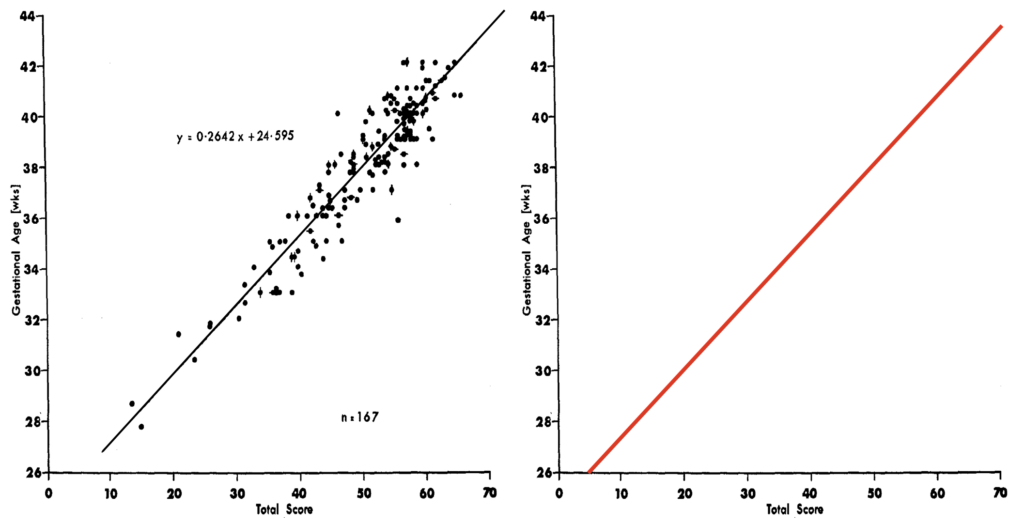Lilly Dubowitz
Lilly Magdalene Suzanne (née Sebők) Dubowitz (1930-2016) Hungarian-born British paediatrician and neonatologist.
Collaborated with her husband to develop the rapidly and reliably estimate gestational age (Dubowitz Score – 1970); and to develop a systematic method for the neurological examination of the newborn (Dubowitz neurological examination – 1980). These tests revolutionised the way newborn infants were assessed in clinical and research practice throughout the world.
Dubowitz was a leading figure in the field of neonatology. She pioneered the use of cranial ultrasound and, later, magnetic resonance imaging to assess the brains of newborns
Biography
- Born Lilly Sebők on 20 March 1930 in Budapest, Hungary
- 1956 – Graduated medicine, University of Melbourne
- 1958 – Postgraduate research position in endocrinology at the Hammersmith Hospital, London
- 1960 – Married neurologist Dr Victor Dubowitz (1931 – )
- 1961 – Registrar in paediatrics at the Department of child health, University of Sheffield
- 1995 – Retired
- Died 14 March 2016
Medical Eponyms
Dubowitz Score (1970)
Lilly Dubowitz and husband Victor, developed and published the scoring system in 1970. The test provided a means of distinguishing small babies who were mature but malnourished from those who were premature and of appropriate small size. The test is simple, rapidly performed and easily recorded through clinical observation
A scoring system for gestational age, based on 10 neurologic criteria and 11 external criteria, has been applied to 167 newborn infants. The method gives consistent results within the first 5 days and is equally reliable in the first 24 hours of life. This scoring system is more objective and reproducible than trying to guess gestational age on the presence or absence of individual signs.
Dubowitz, 1970
The score measured some neurological signs, such as the infant’s ability to flex and extend its joints and limbs, and also some superficial signs, examining the skin, eyes, ears, genitals and other physical characteristics for signs of maturity.
From these, after the examiner had matched the infant’s responses with the options on an illustrative chart, came the Dubowitz score.

Dubowitz score 1970
Dubowitz neurological examination (1980)
Dubowitz et al published their new approach to the neurological assessment of the pre-term and full-term newborn infant in 1980. They selected a series of neurological and neurobehavioral items with the whole examination recorded on a single sheet of paper with detailed instructions and diagrams. Individual items were scored on a 5-point scale.
Pilot studies have already demonstrated its sensitivity to perinatal factors such as drugs, asphyxia and infection. The examination can be rapidly documented by residents with no special training in newborn neurology. This method should provide a practical and objective means of monitoring the neurological status of the newborn infant, and also a baseline for longitudinal studies of neurological function in the newborn and developing infant.
Dubowitz et al 1980
In 1998, Dubowitz et al reviewed the initial examination. They found a number of the items were difficult to elicit, while others, although easily elicited, proved to be relatively superfluous. New items included evaluating general movements and patterns of distribution of tone. An optimality score was included to make the evaluation more quantitative and for comparison with sequential examinations with neurophysiologic and imaging findings. The revised and re-structured the proforma and reviewed the new scheme in 224 low-risk, term newborn infants (Dubowitz et al 1998).
The revised version of the examination was published in full in 1999, and included 34 items subdivided into 6 categories (tone, tone patterns, reflexes, movements, abnormal signs, and behaviour). (Dubowitz et al 1999)
Major Publications
- Dubowitz L. Assessment of gestational age in newborn: a practical scoring system. Arch Dis Child. 1969;44(238):782.
- Dubowitz LM, Dubowitz V, Goldberg C. Clinical assessment of gestational age in the newborn infant. J Pediatr. 1970;77(1):1-10. [Dubowitz Score]
- Dubowitz LM, Dubowitz V, Goldberg C, Keith I. Rapid assessment of gestational age at birth. Arch Dis Child. 1976;51(12):986-987.
- Dubowitz LM, Dubowitz V, Morante A. Visual function in the newborn: a study of preterm and full-term infants. Brain Dev. 1980;2(1):15-29
- Dubowitz LM, Dubowitz V, Palmer P, Verghote M. A new approach to the neurological assessment of the preterm and full-term newborn infant. Brain Dev. 1980;2(1):3-14. [Dubowitz neurological examination]
- Dubowitz LM, Dubowitz V. The Neurological Assessment of the Preterm & Full-Term Newborn Infant. William Heinemann Medical 1981
- Dubowitz LM, Levene MI, Morante A, Palmer P, Dubowitz V. Neurologic signs in neonatal intraventricular hemorrhage: a correlation with real-time ultrasound. J Pediatr. 1981;99(1):127-133
- Dubowitz L, Mercuri E, Dubowitz V. An optimality score for the neurologic examination of the term newborn. J Pediatr. 1998;133(3):406-416.
- Dubowitz LM, Dubowitz V, Mercuri E. The Neurological Assessment of the Preterm & Full-Term Newborn Infant 2e. Mac Keith Press 1999
- Dubowitz L, Ricciw D, Mercuri E. The Dubowitz neurological examination of the full-term newborn. Ment Retard Dev Disabil Res Rev. 2005;11(1):52-60.
References
Biography
- Mercuri E. Lilly Dubowitz obituary. The Guardian 9 May 2016
- Tansey E M (intvr); Yabsley A (prod) (2017) Dubowitz, Victor: 04 – Lilly Dubowitz; newborn babies; and ‘has the baby been Dubowitzed?’ (27-Sep-2016). History of Modern Biomedicine Interviews (Digital Collection), item e2017115. London: Queen Mary University of London.
- Vass G. Dubowitz Lilly emlékére (1930. március 20.–2016. március 14.) [In memoriam Lilly Dubowitz]. Orv Hetil. 2017;158(28):1116-1117.
- Dr Lilly M. S. Dubowitz, MD, MRCP, FRCP (1930-2016). Hammersmith Neurological Examinations
- Bibliography. Dubowitz, Lilly MS. WorldCat Identities
Eponym
- Molteno C, Grosz P, Wallace P, Jones M. Neurological examination of the preterm and full-term infant at risk for developmental disabilities using the Dubowitz Neurological Assessment. Early Hum Dev. 1995;41(3):167-176.
- Stuart-Smith J, Scott K, Johnston M. Where are all the Women? LITFL 2020
Victor Dubowitz talking about Lilly Dubowitz; newborn babies; and ‘has the baby been Dubowitzed’
[cite]
Graduated from Southampton Medical School in 2017 with BMBS. Working in Sir Charles Gairdner Hospital Emergency Department in Perth, Australia.
Studied at University of Birmingham MBChB, and King's College London BSc (Psychology). British doctor working in Emergency Medicine, Perth. Special interests include elderly care, neurology and emergency medicine.





